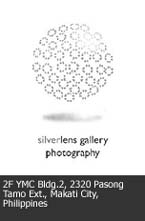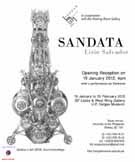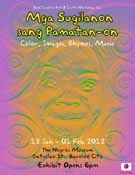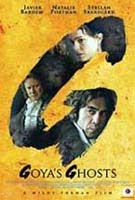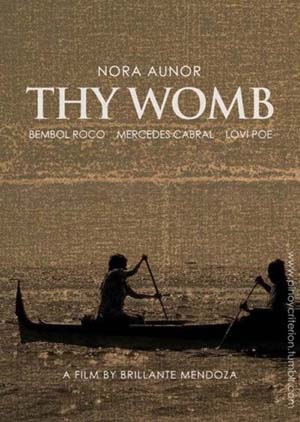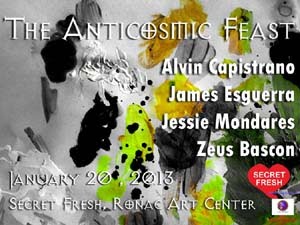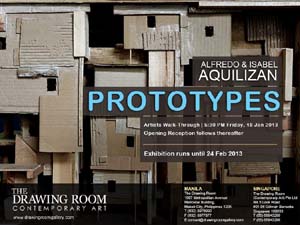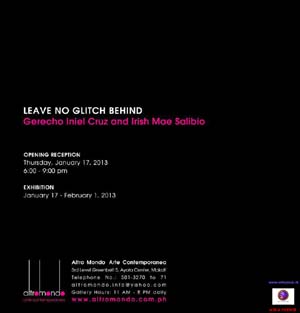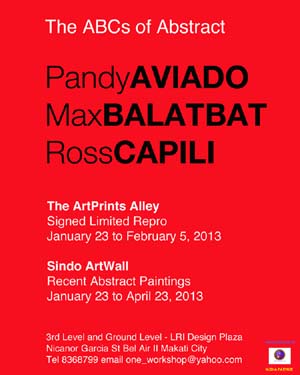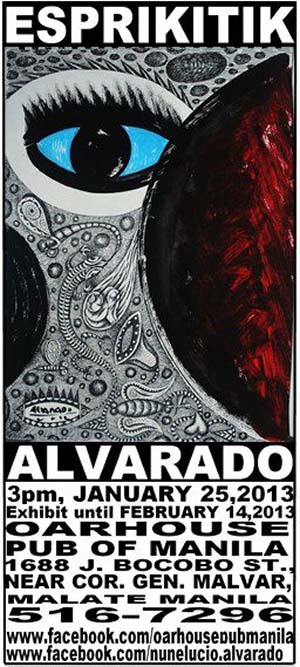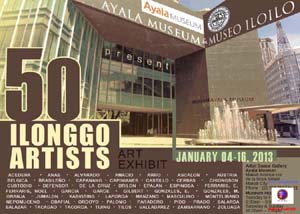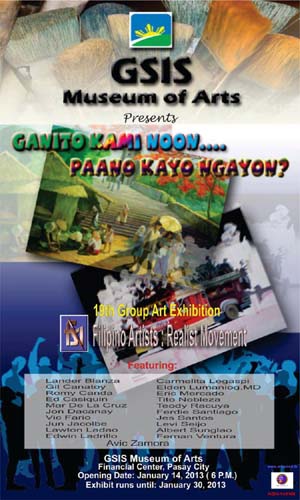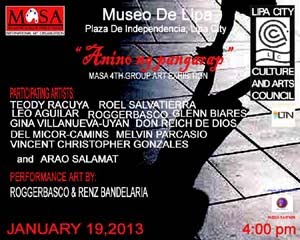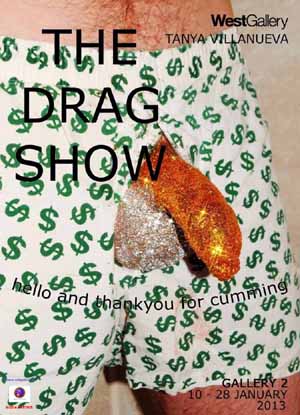
NEWS
Tuesday, September 25, 2012
Tuesday, September 18, 2012
Friday, September 7, 2012
COMMUNITY UNITES TO REBUILD CLOCK TOWER DESTROYED BY EARTHQUAKE
Community unites to rebuild clock tower destroyed by
earthquake
Thousands of fragments of medieval Torre dei Modenesi are
sifted
By Ermanno Rivetti. Web only
Published online: 09 August 2012
The Torre dei Modenesi, a 13th-century clock tower
destroyed in May by the two powerful earthquakes that rocked the Emilia-Romagna region of Italy Finale
Emilia
This is a contrast to the situation in the similarly
quake-damaged city of l’Aquila , Italy
Volunteers have so far sifted through around 7,000 fragments
of the tower, from red terracotta bricks and pieces of the clock to parts of
the bell itself. The fragments are being stored in pallets in the courtyards of
local primary schools, and it is expected that they will be transferred to a
warehouse for the winter, where they will be studied further.
A spokesperson for the Direzione Regionale per i Beni
Architettonici e Paesaggistici (the regional arm of Mibac, the Italian ministry
of culture) has acknowledged the presence of civilian volunteers in Finale but has
also stated that the official response teams are still evaluating the
widespread damage to the region’s heritage and are not specifically focusing on
the tower at this time. He added, however, that where it is possible “our
priority is to rebuild damaged sites with the original pieces”.
Thursday, September 6, 2012
SURPRISING TEHRAN SHOW OF ART INSPIRED BY THE STATIONS OF THE CROSS
Surprising Tehran
Günther Uecker exhibition will focus on human rights abuses
By Gareth Harris. Web only
Published online: 08 August 2012
In a surprise move, an exhibition focusing on human rights
abuses is due to open at the Tehran Museum of Contemporary Art next month. The
show, dedicated to the German sculptor and kinetic artist Günther Uecker,
includes 14 works from the series "The Human Abused: 14 Pacified
Implements", which was commissioned in 1992 by the Berlin-based Institute
for Foreign Cultural Relations (IFA), a cultural organisation funded by the
German government. The use of violence against foreigners based in Germany
"In these works, [Uecker] expresses his visions of
life and life's suffering and tries to reveal, in his sensitive setting of
signs, basic human drives: aggression, injury, destruction, setting against
them gestures of reconciliation," says the institute's website, adding
that the "injury of human being by human being" is the focus of the
series. The works are based on the Stations of the Cross. These elements of
Christian iconography may, however, raise eyebrows in the Iranian capital.
The exhibition (16 September-31 October) is also due to
include 88 works provided by the artist who joined the Zero Group in 1961, an
avant-garde Düsseldorf-based collective that declared art should be ultra
minimalist, starting from "point zero". The show is funded by IFA,
the German Embassy, the Goethe-Institut and the German publishing company Geuer
& Breckner.
CRANACH’S MADONNA UNDER THE FIR TREE RETURNED TO POLAND
Cranach’s Madonna under the Fir Tree returned to Poland
The painting, which was copied and stolen by a German
priest, makes its way back to Wroclaw
By Paul Jeromack. Web only
Published online: 07 August 2012
Lucas Cranach the Elder’s Madonna under the Fir Tree, 1510,
has been returned to the Cathedral of St John in Wroclaw Poland
Unlike the Raphael, which for some time had been feared
destroyed, art historians and Polish authorities knew the Cranach had survived
the war. In 1978, it was noted in the revised edition of Max Friedlander and
Jakob Rosenberg’s The Paintings of Lucas Cranach that “just when and how the
original vanished is obscure, but according to credible testimony it survives
and has been reportedly offered for sale on the international art market”.
According to Poland ’s
Ministry of Foreign Affairs, the painting was taken from the cathedral in Wroclaw , then known as Breslau
and part of German territory, to protect it from Allied air raids. Cranach was
known to be one of Hitler’s favourite artists and it is possible that it was
ear marked for inclusion in the planned Führermuseum, Linz
After the war, the picture was returned to the Diocesan Museum ,
Wroclaw
Wednesday, September 5, 2012
PORTLAND GETS SET FOR TIME-BASED ART
By Eric Magnuson. Web only
Published online: 06 August 2012
A rock ‘n’ roll tribute to the utopian designer Buckminster
Fuller is one of the eclectic projects included in the Time-Based Art Festival,
organised by the Portland Institute for Contemporary Art in Oregon
This year’s festival, which includes performance art,
theatre, dance, film and music and is held in venues throughout the city,
features both international and local artists. Newcomers to the festival
include the San Francisco
Describing how the festival differs from other art events,
Kennedy says that the “artists are often in the room and the audience is
invited to be in concert with them”. She has concentrated on the idea that
physical works need not exist in a digital age for the exhibition “End Things”.
As part of the show, the Italian artist Alex Cecchetti will tell a story
through words, objects and drawings, which will then be retold throughout the
festival by other artists, each passing the story onto the next. “It’s like a
game of telephone [or Chinese whispers],” Kennedy says. “When Alex returns, the
story isn’t his anymore.”
Tuesday, September 4, 2012
CONSERVATORS ALSO OPPOSE PLAN TO SIDELINE BERLIN’S OLD MASTERS
Conservators also oppose plan to sideline Berlin
One of world's greatest collections to be replaced by
Modern art
By Julia Michalska. Web only
Published online: 03 August 2012
Conservators in Germany
have joined the protest over plans to relocate the world-famous collection of
Old Masters in Berlin Bode
Museum Museum Island
The move, which was announced at the beginning of July,
poses a “significant conservation risk”, said a statement released by the
Bonn-based Verband der Restauratoren (Association of Restorers) on 19 July. The
association, which has around 2,500 members, argues that the Pietzsch
collection should move into the Gemäldegalerie only when a suitable location
has been found to accommodate the Old Masters. “Only then can transport be
reduced and the possibility that large parts of the collection will disappear
into stores for years be avoided,” the statement said. “Any handling, packaging
and transportation—even within the building—means mechanical stress and
climatic changes to the works, which weakens their substance.”
Around 12,000 people, including Prince Georg Friedrich of Prussia Harvard University Germany
Monday, September 3, 2012
HIGH LINE OVER-UNDERSTATES JOHN CAGE COMMEMORATION
High Line over-understates John Cage commemoration
The composer’s minimalist film and sound work is somewhat
lost in a small passageway on the elevated park
By Helen Stoilas. Web only
Published online: 03 August 2012
A screening of John Cage’s One11 and 103, 1992, opened
without much fanfare on Thursday on the High Line, the elevated park along Manhattan ’s West Side .
Installed to celebrated what would be the composer and artist’s 100th birthday,
the piece itself is a contemplative melding of sound and light, but its
installation in a dim passageway detracts from the experience of viewing the
work.
On the hot, late afternoon of the opening, the High Line was
teeming with visitors, lounging on the wooden benches or strolling down the
former elevated railway, enjoying the riverside views. After tearing ourselves
away from the inviting refuge of wildflowers, it took a few minutes to actually
locate Cage’s work. The piece is installed in the High Line’s 14th Street
Very few passersby seemed to realise they were walking by
an art work (one visitor in fact was found napping on a nearby table) perhaps
because for much of the film, the screen is blank or lit by simple, white
shapes that could look like falling sunlight. Cage decribed One11 as “a film
without subject. There is light but no persons, no things, no ideas about
repetition and variation. It is meaningless activity which is nonetheless
communicative, like light itself, escaping our attention as communication
because it has no content to restrict its transforming and informing power.”
Sometimes you can pick out snatches of notes or tones from the composition, but
it is often difficult to hear the subtle music clearly over the low din of Chelsea
Sunday, September 2, 2012
MOBILE UNIT IN HUNT FOR RUSSIA’S BEST SELF-TAUGHT ARTISTS
Mobile unit in hunt for Russia
The Museum of Everything is running a five-city talent
search for outsider art show at Moscow ’s Garage Center
By Eric Magnuson. Web only
Published online: 02 August 2012
The Museum of Everything, the largest travelling exhibition
of outsider art, is taking its country-hopping roadshow to the streets of Russia Russia Moscow
“Russian self-taught artists are still relatively unknown
outside the region and contemporary ones even more so,” says James Brett, the
curator and founder of the Museum of Everything. “The museum hopes that this
project will help give these artists the visibility they deserve so that we can
bring them to the attention of the general public and curators and museums
worldwide.”
Amateur artists at each stop will be asked to submit their
work before the critical eyes of a variety of artists and curators, including
the Russian artist Leonid Tishkov, the Ukrainian photographer Sergey Bratkov
and curators such as Tamara Galeeva, who is the dean of art and culture studies
at Ural State University
Saturday, September 1, 2012
CHRISTIE’S “CONSIDERING ITS OPINIONS” AFTER RUSSIAN PAINTING SETBACK
Christie's “considering its options” after Russian painting
setback
Judge orders auction house to refund £1.7m to buyer of
Odalisque
By Riah Pryor. Web only
Published online: 01 August 2012
Christie's is standing by its attribution of a painting to
the Russian artist Boris Kustodiev, which is at the centre of a long-running
authenticity battle after a judge in London
Christie's was ordered to refund £1.7m to Aurora Fine Arts,
a company owned by the Russian billionaire Viktor Vekselberg, which purchased
the work in 2005. The judge cleared the auction house of claims of negligence
and misrepresentation.
A spokesman for the auction house says: “We are surprised
and disappointed,” adding that it stands by its attribution to Kustodiev. When
asked whether the company would appeal he says it is “considering its options.”
The painting is dated 1919 and depicts a nude woman asleep.
It is known to have been exhibited in Riga , Latvia , in 1932 and first sold at Christie's London Aurora
During the 20-day hearing, Alisa Borisovna Lyubimova, a
research fellow at the State Russian Museum, St Petersburg, said she was
“almost 200% sure” that the work is not genuine. The judge also noted in his
summing up that she would not change her view even if shown contemporary
documents tending to suggest authenticity. Max Rutherston, who works as a consultant
for Bonhams, argued that the quality of work by artists is not always
consistently high and concluded that the painting was by Kustodiev's hand.
Friday, August 31, 2012
ANNA SOMERS COCKS, CHAIRMAN, AND FOUR LEADING TRUSTEES OF THE VENICE IN PERIL RESIGN
Anna Somers Cocks, chairman, and four leading trustees of
the Venice
Charity to return to its restoration roots but rising
waters still a threat to city
By The Art Newspaper. Web only
Published online: 30 July 2012
Anna Somers Cocks, the chairman of the Venice
From 2001 to 2004, Venice in
Peril financed a research project at the University
of Cambridge and the Consortium for
the Co-ordination of Research into the Venetian Lagoon (CoRiLa) to bring
together all the scientific work done on the flooding of Venice Churchill College ,
Cambridge , where more than 130 scientists from Venice , the rest of Italy ,
the Netherlands , UK , St Petersburg ,
New Orleans
Their conclusion was that the city definitely needed mobile
barriers at the openings between the Adriatic
and lagoon, but that these only bought time, and that the authorities needed to
be planning far beyond them.
Thursday, August 30, 2012
PROCESOS Y TRANSFORMACIONES
PROCESOS Y TRANSFORMACIONES
Procesos y Transformaciones
Angeles Agrela, Pilar Albarracin, Javier Arce, Valeria
Cavestany, Chema Cobo, Abraham Lacalle, Miki Leal, and Jose Piñar
September 1 to October 27, 2012
Opening Reception: September 1, Saturday, 7 pm
The Department of Avant-Garde Cliches (D.A.G.C.) Gallery
and the Departamento Cultural Embajada de España en Manila
are proud to present eight Spanish artists processing themes on the social and
the political, formal issues and narrative content, the imaginary and the
psychological, which transform the artistic and cultural affinity between Spain and the Philippines Manila
Extraordinary feats of physical prowess typically are
synonymous to the idea of the superhero, with perfect physique as significant
vessel for power, Angeles Agrela explores the symbolism of strength not only
through its external outfit, but also on the unseen mettle of those who put
themselves into the role of the hero, pondering on the unheralded sacrifice,
dedication, and discipline that may or may not be understood by an unsuspecting
public, which intrigues her as similar to the calling of the artist. By
highlighting the anthropology of the everyday through performances and
photographic works, Pilar Albarracin investigates the phenomena of cultural
stereotypes and ethnic clichés in order to analyse and expose the dominant narratives
that determine identity. Using history as point of further inquiry and
discovery through artistic appropriation and cultural referencing, Javier Arce
creates works that explore the underlying gestures of public consciousness that
create distinctions of taste and conventional values. Valeria Cavestany's
brilliant paintings are a reflection of the world viewed with an independent
spirit, where nature is experienced as magical menagerie standing in for pure
innocence along with the potential for mischief. The works of Chema Cobo recall
immediately the inspiration of Goya, with a sensitive eye towards the macabre
that represents the shadowy plumbs of the imagination stirred with the
criticality of doubt. The works of Abraham Lacalle recalls the hedonism of
Matisse, the structural complexity of Picasso, and the irony of Duchamp,
featuring figures, objects, events that transmute into fantastic narratives
from everyday life done with vibrant color fields and dazzling geometric
patterns, pure and joyful altogether. Miki Leal paints with lyrical flourish
that pushes the visual possibilities in his work like that of jazz in music
which he enjoys, creating unsuspecting narratives that leaves the viewer
breathless with anticipation and wonder. Jose Piñar makes abstract works that
speaks of painting as process oriented, systematic, and yet open-ended with
allowances for improvisation and innovation stemming from outside of the medium
itself.
BEIJING TO GET FREEPORT TO CHALLENGE HONG KONG’S SUPREMACY
The Art Newspaper exclusive: facility next to international
airport due to be built by end of 2013
By Gareth Harris. Web only
Published online: 26 July 2012
The Chinese government plans to turn Beijing
into a key art hub in Asia by building an 83,000 sq. m freeport
next to the Beijing
Capital International
Airport Beijing freeport will “have a huge impact on the Chinese
art world”, stressing that the Beijing base will
challenge Hong Kong ’s supremacy as an art centre.
Euroasia, the Swiss holding company behind the Singapore freeport China but the freeport in Beijing
Earlier this year, the Chinese government reduced the
customs duty on imported works of art from 12 % to 6% but the tax break only
applies for a year. Apart from the customs duty, importers are still required
to pay value added tax of 17% plus an additional consumption tax of 5% (The Art
Newspaper, China Focus, May, p6).
Wednesday, August 29, 2012
TRAGIC EVENT OVERSHADOWS TATE MODERN OPENING
Tragic event overshadows Tate Modern opening
Tino Sehgal's storytelling takes
centre stage in vast Turbine Hall
By Gareth Harris. Web only
Published online: 26 July 2012
Snorkeling off the Italian island of Elba ;
a mother’s tears as her son departs for university; the trauma behind erasing a
tattoo: these are some of the tales told by participants in Tino Sehgal’s
commission for Tate Modern’s Turbine Hall in London
Sehgal’s team strike up
disconcerting, affecting conversations with visitors, interspersing these
intimacies with manic movements choreographed by the Berlin-based artist; the
storytellers start running in a frenzied circular fashion in pursuit of an
invisible quarry, play tag and chant: “Even in the technological age.”
Chris Dercon, the director of Tate
Modern, says that Sehgal has transformed the museum into a "biopolitical
and anarchic experience”. Hans Ulrich Obrist, the co-director of London
But not everyone is impressed. The
critic Alastair Sooke wrote in the Daily Telegraph that he experienced: “A
whiff of artifice about their stories, which feel polished and rehearsed.
Sehgal does not hit the spontaneous social interaction that he strives for.”
The participants are not actors although they are paid, working four-hour
shifts.
Tuesday, August 28, 2012
VISUAL INSIGHTS
VISUAL INSIGHTS: THE RATIONALE
In a country where the gift of freedom of expression is
something we enjoy, it is important that we use such privilege to voice our
sentiments on any issue worth our participation. Though we oftentimes stay away
from controversial situations, to avoid conflict and to make ourselves safe,
ultimately, sitting down does nothing to contribute towards creating a
solution.
n the field of art, artists are often misconstrued as just
confining themselves to creating artworks, without giving importance to the
substance of their expression. Though there is a bit of truth to it, there are
also a few who incorporate unto their art their individual perception, using
their art as a forum for comment and thereby helping to mould public opinion.
iven the opportunity to manifest their opinion, aspiration
and insights, through art, artists: Antonio Alcoseba, Darby Vincent Alcoseba
and Celso Duazo Pepito have pooled their talents together to come up with an
art exhibit entitled: VISUAL INSIGHTS. In this exhibit, each of them will
showcase their individual observations about life in the society where they
belong and their reaction towards the environment that affect their creative
undertakings.
ntonio Alcoseba, who is more recognized for his masterful
renderings with watercolour, will introduce his shift to cubism, allowing
himself to embrace the gift of artistic evolution, after he devoted most of his
time painting beautiful landscapes, old houses and other subjects that showed
the influence of Andrew Whyte. His theme for this show is simply focused on
ordinary subjects that have caught his interest, his objective being to
encourage his viewers to take care of the little things, since more often than
not, the little things are bigger than they first appear.
oung and energetic, Darby Vincent Alcoseba has endeavoured
to record the beauty of the countryside by creating minute details to subjects
which have provided him great inspiration. His continuing romance with nature
is his way of encouraging his peers to do something that helps preserve our
environment. Influenced by his father, Darby uses watercolour and endeavors to
capture the details of his chosen subject not minding how much time he would
spend on it, in the spirit of personal satisfaction.
Living by this philosophy that art goes beyond the beauty
it depicts, Celso Duazo Pepito's paintings communicate positive, godly values.
He uses his art to promote his advocacies toward uplifting values that focus on
strengthening family ties, love for his country and moral ascendancy based on a
deep relationship with God. What sets Pepito apart from his peers is his
holistic view of his art. He links together what he values most: family,
country and God that goes with the belief that truly, art goes beyond beauty.
In a way, VISUAL INSIGHTS are images of life, colored not
just by pigments, but by the ideas and opinions of their creators.
SEE “INVISIBLE ART” BEFORE IT DISAPPEARS
See “Invisible Art” before it disappears
Anna Somers Cocks explains why this Hayward Gallery show,
closing 5 August, should not be missed
By Anna Somers Cocks. Web only
Published online: 26 July 2012
Anyone listened to the 1963 song “Twenty-Four Hours from Tulsa
How long can we understand a work of art in the terms of
its own time? Fifty years? Twenty? Probably not more than five if it is
contemporary art, which is as finely tuned to the mood of the moment as pop
music, but usually with an additional load of more or less philosophical
baggage that makes it even harder to penetrate after the theory has moved on.
Precisely because of this, I recommend catching “Invisible:
Art about the Unseen 1957-2012” at the Hayward Gallery in London
As its curator Ralph Rugoff says in the catalogue (also
printed in pale grey, and completely lacking in bullshit): “Art is about paying
attention, and invisible art asks us to pay attention in a different way.” Good
for him. This has been a gamble that has paid off and most of the critics have
loved it. The show hasn’t got a sponsor—they don’t usually do immaterial—but
Rugoff, who is also director of the Hayward Gallery, went ahead anyway. Maybe
it’s because he comes from California
That old magus Duchamp should be the patron of the whole
event, because none of the works could have been made without his influence,
direct or indirect. It aims to explain the various reasons why artists have
made invisible art, from the idea that art is in the eye of the beholder to the
idea that the market has turned art into a mere commodity so you must purify it
of substance, to the idea that you can make almost invisible art and play with
people’s sense of space, to the idea that some political issues are so serious
that you can only deal with them by absence and allusion. As you see, a lot of
ideas.
Monday, August 27, 2012
LA MoCA PULLS OUT OF RICHARD HAMILTON RETROSPECTIVE
LA MoCA pulls out of Richard Hamilton retrospective
After chief curator Schimmel’s departure, there is no space
in museum’s schedule for British pop art show
By Martin Bailey. Web only
Published online: 26 July 2012
The Museum of Contemporary Art (MoCA), Los Angeles Hamilton
A MoCA spokeswoman tells The Art Newspaper that the gallery
will “not be participating” in the international touring show of the late
British pop artist’s work. Hamilton London
The exhibition was due to travel to Los
Angeles , London , Madrid
and Philadelphia London Madrid Sofia Hamilton
More certain is a separate exhibition of Hamilton ’s
late works at the National Gallery in London
Sunday, August 26, 2012
OUTSTANDING ROMAN SARCOPHAGUS RECOVERED AFTER MORE THAN 20 YEARS
Outstanding Roman sarcophagus recovered after more than 20
years
Executor of late, unnamed US
By Tina Lepri and Ermanno Rivetti. Web only
Published online: 26 July 2012
An ancient Roman alabaster sarcophagus, which was stolen
more than 20 years ago from a church south of Rome ,
was returned to Italy Rome on a cargo flight in a
container reportedly displaying the official seal of the Italian Embassy in London
A special team from the cultural heritage protection
division of Italy
The sarcophagus, which dates from between the second and
third centuries BC, was presented at a press conference in Rome and then
returned to its hometown of Aquino, around 100km south of the capital, where it
is on show in the deconsecrated church of Santa Marta.
Although official sources have not confirmed this, the
Italian newspaper Il Giornale has reported that the private collection in
question belonged to the late US Italy
The work, which features in relief scenes of chariot races
at Rome Italy
Saturday, August 25, 2012
ITALIAN - US TEAM DISCOVER EVIDENCE OF SICILY’S OLDEST TEMPLE
Italian-US team discover evidence of Sicily
Archaeologists find early temple beneath the one at
Selinunte
By Silvia Mazza. Web only
Published online: 25 July 2012
A team of researchers and archaeologists from the Parco
Archeologico di Selinunte, near Trapani in
western Sicily , and the Institute of Fine Arts
The team, led by Clemente Marconi, the professor of the
history of Greek art and archaeology at the Institute
of Fine Arts who is the director of
excavations at Selinunte, found the evidence of an early temple beneath the
floors of a later one, known as Temple
R.
Caterina Greco, the director of the archaeological park,
calls this find “exceptional". Greco also praises what she calls “a new
synergy—with funds from NYU and co-ordination from our staff—that symbolises a
modern model of management for the park.”
Friday, August 24, 2012
EQUI TOUR
TUPADA.ACTION.&.MEDIA.ART
in cooperation with 98B
presents
EQUI TOUR | Seiji Shimoda
Sunday, August 26, 2012 | 1:00 PM
98B Mezzanine, 413 Escolta St. First
United Building
One of the most active visual
performance artist in Japan
Seiji Shimoda was born on the 6th
of July 1953, in the mountainous region of Nagano , Japan Japan Osaka
City University Paris Asia , North & Central America.
98B
98B is a multi-disciplinary
laboratory. It seeks to establish a convergence with artists, designers,
curators, writers, musicians, film makers, educators, researchers, cultural workers,
performers, architects and students together with the general public. It is
deemed as a place for discussion and collaboration with and among its growing
community. Talks and presentations on a range of topics are scheduled to
facilitate diversity and generate exchange. Here, thoughts are shared and plans
are formulated to better engage present and future stakeholders.
98B is a conceptual locale. Its
physical presence is not bound by a particular site. The 98B venue exists
wherever communal engagements are necessary or applicable.
How to get to 98b Escolta by train?
1. Take the LRT to Carriedo
2. Walk to Escolta and go to 413 Escolta St First United
Building East West Bank & UCPB on the
groundfloor, In front of JRS Express/PLDT
3. 98B is at the Mezzanine!
QATAR FUNDS £8.7M GULF-ARCHIVE PROJECT AT BRITISH LIBRARY
More than half a million pages of Arabic manuscripts and East
India Company archives to go online
By Riah Pryor. Web only
Published online: 25 July 2012
Qatar is funding a £8.7m project at London's British
Library to make around 500,000 pages available online from the archives of the
East India Company and the India Office in its collection, and a further 25,000
pages of medieval Arabic manuscripts.
The aim, according to Sheikha Moza bint Nasser, the
chairperson of the Qatar Foundation, is “to place Qatar
The project will involve the creation of 43 jobs. The team
will work in partnership with the Qatar National Library.
The project is the result of an understanding agreed by the
two British and Qatari libraries in 2010 that includes plans to work with other
archives and institutions across Europe and
the Gulf. A spokesman for the British Library says: “This is still in scope for
later in the programme.” Qatar
Subscribe to:
Posts (Atom)




























































